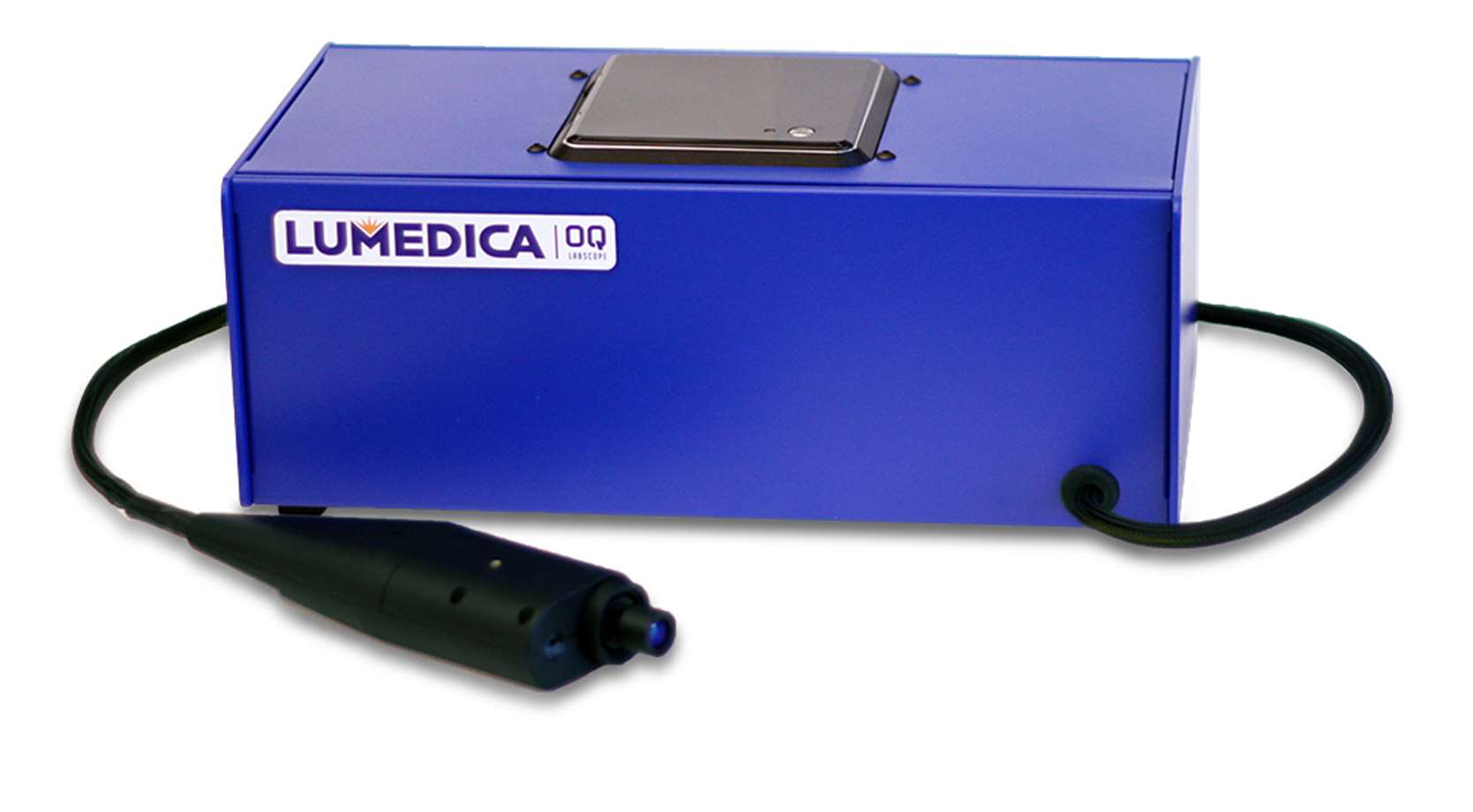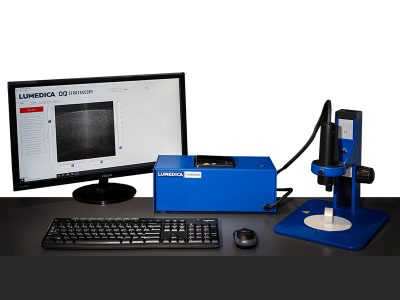- Home
- Technical Products
Enterprise Cloud IT Solutions
Test Measurement
Industrial Measurement
- Solutions
Enterprise Cloud IT Solutions
Test Measurement
- Resource Center
- About Us
 EN
EN
OCT Imaging Systems and Solutions
- 1310nm center wavelength
- Up to 6mm deeper imaging depth
- Suitable for more biological/industrial testing scenarios
- Compact OCT host with integrated
- Includes spectrometer + reference arm + micro-computer
- Can be customized according to customer requirements

What is it? OCT ?
Technical Principles of OCT Imaging
Light from the system light source, in the coupler is divided into two beams of the same frequency, the initial phase difference is constant parallel light, respectively, into the reference arm of the structure of the Michaelson interferometer and the sample arm, which the reference arm of the light by the reference mirror reflection and return to the subsequent optical path, the sample arm of the light to go through the sample layer of the scattering and reflection of the role of the light back to the optical path. If the optical range difference between the two returning beams is kept within a coherence length, interference can occur in the coupler. For time-domain OCT, the interference signals of different optical ranges can be obtained by moving the reference arm or changing the delay, while for frequency-domain OCT, single-point full-depth information can be obtained from a single scan by calculating the interference term through a fast Fourier transform.
Imaging Example of Hongke OQLabscope Series OCT System
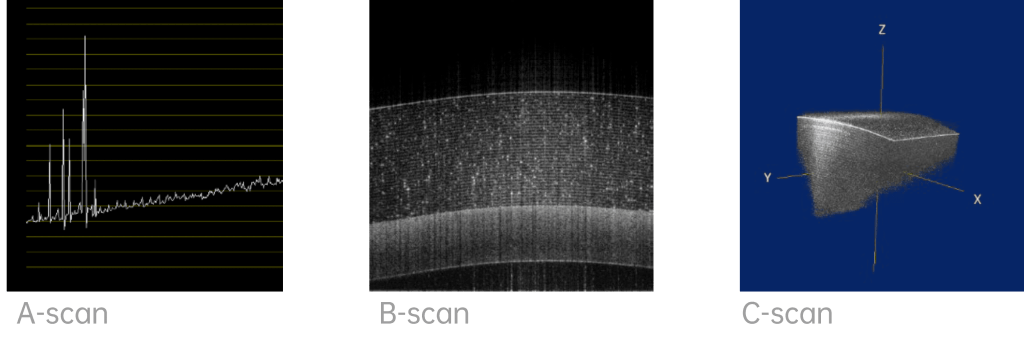
Hongke Partners with Lumedica to Provide Innovative OQLabscope Series of OCT Imaging SystemsWith its highly integrated, patented design, portable, and low-cost architecture, medical/biotech practitioners, innovative researchers, factory testers, and educators can easily take advantage of OCT's powerful imaging capabilities.
The OQ LabScope series generates 512 x 512 pixel images with 2um depth resolution, comparable to OCT systems costing three times as much as ours; fast image generation - up to 80kHz-A scanning speed for real-time 3D rendering; customized modules can be configured on demand for specific applications; optional workstation configurations - microprobe displacement stage, portable package configurations - handheld version, different light source wavelengths, scanning speeds, etc., supporting OEM customization. Handheld version, microscope, different light source wavelengths, scanning speeds, etc. OEM customization is supported.
Imaging Advantage Deciphering the Unknown
Low cost, high performance
Generates images of 512 x 512 pixels.
Depth resolution up to 2um
Equivalent performance to OCT systems costing three times as much as ours
Ultra-fast 3D imaging
Quickly generates images
Up to 80 kHz-A scanning speed
Real-time 3D rendering
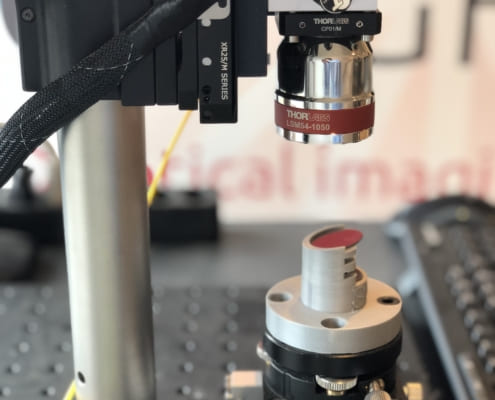

Customizable Multi-Application
Configurable custom modules
Match your specific application
Fulfillment of your multiple needs
Workstation or Carrying Case
Workstation Configuration: Microminiature Stage
Carrying case configuration: Handheld version - microscope, different light source wavelengths, scanning speed, etc.
Support OEM customization
Wide range of applications with unlimited possibilities
Ophthalmology/Skin Testing
Multilayered structure of the retina:OQ LabScope systems can be optionally equipped with specializedRetinal Imaging ModuleThe compact design offers the potential for a portable ophthalmic viewing device that can be easily combined with a fundus camera to provide multimodality testing.
Skin tissue stratification image:OQ StrataScope Maximum Imaging Depth Up to4.5mmIt can be widely used inIntradermal Stratigraphy 3D Characterization
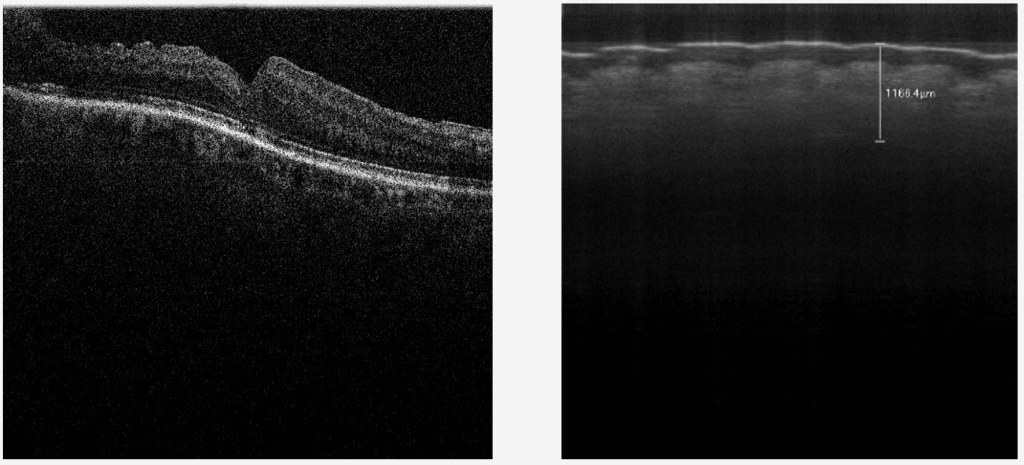
Retina Human skin

Blueberry capsule
Fruit/Drug Testing
Blueberry near epidermis:OQ LabScope 3.0 utilizes theHarmless near-infrared - short-wave infrared light sourcesThe scan can penetrate well into biological tissues, transparent/semitransparent materials, such as the epidermis of fruits at a depth of a few millimeters.
OCT image of the capsule:Reflective signals from the upper and lower surfaces of the capsule can be clearly identified and precisely analyzed.Thickness Measurement
The software also comes withAverage thickness measurement functionAutomatic measurement of capsule wall thickness.
Non-destructive testing of industrial materials
Multi-reflective layers can penetrate the material:Typical OCT imaging samples - plastic polymer coatings, ceramics, various tapes (regular, insulated, insulated, cured, etc.)
OCT:Depth of penetration at the millimeter levelandMicron-level resolutionIt can clearly detect defects, bubbles, etc. within the object.
- Industrial production lineOK/NOOK Product Determination
- Easy access to optical interference informationDepth/Thickness/SizeMeasurement Data

Lead Layer Ceramics DefectsTape

Inline Depth of Melt laser perforation
Laser Welding/Laser Punching
The OCT optical path can be easily combined with theCoaxial integration of processing optical paths
Laser Processing OCT Inline Depth of Melt Monitoring SystemBasic principle: OCT detecting light path and processing light path are coaxial, real-time monitoring of welding depth.
Laser drilling(OCT image of a workpiece (0.5mm hole diameter): Machining contour inspection over a wide area using a vibrating mirror.
For paid testing, please contact us!
Hongke professional engineers, provide you with technical support throughout the process.


